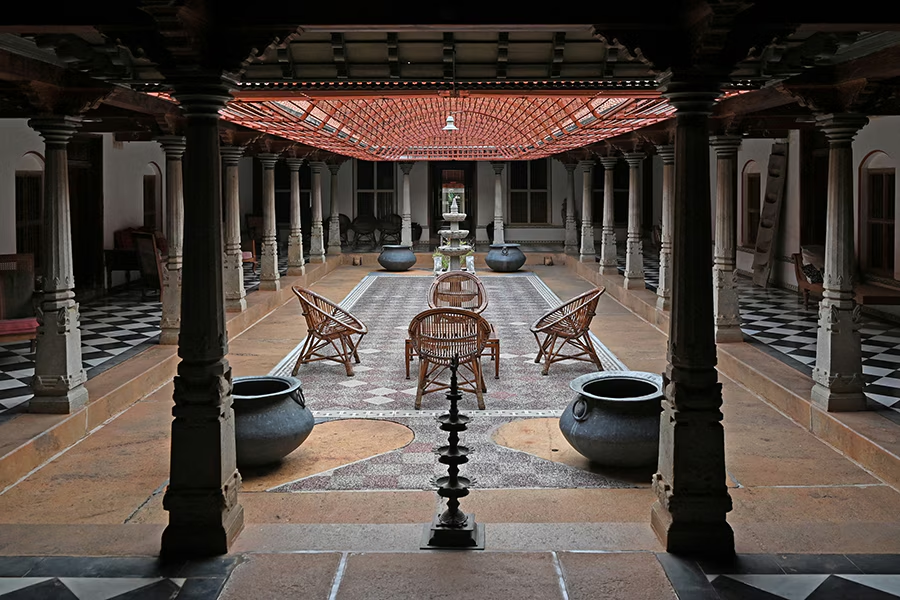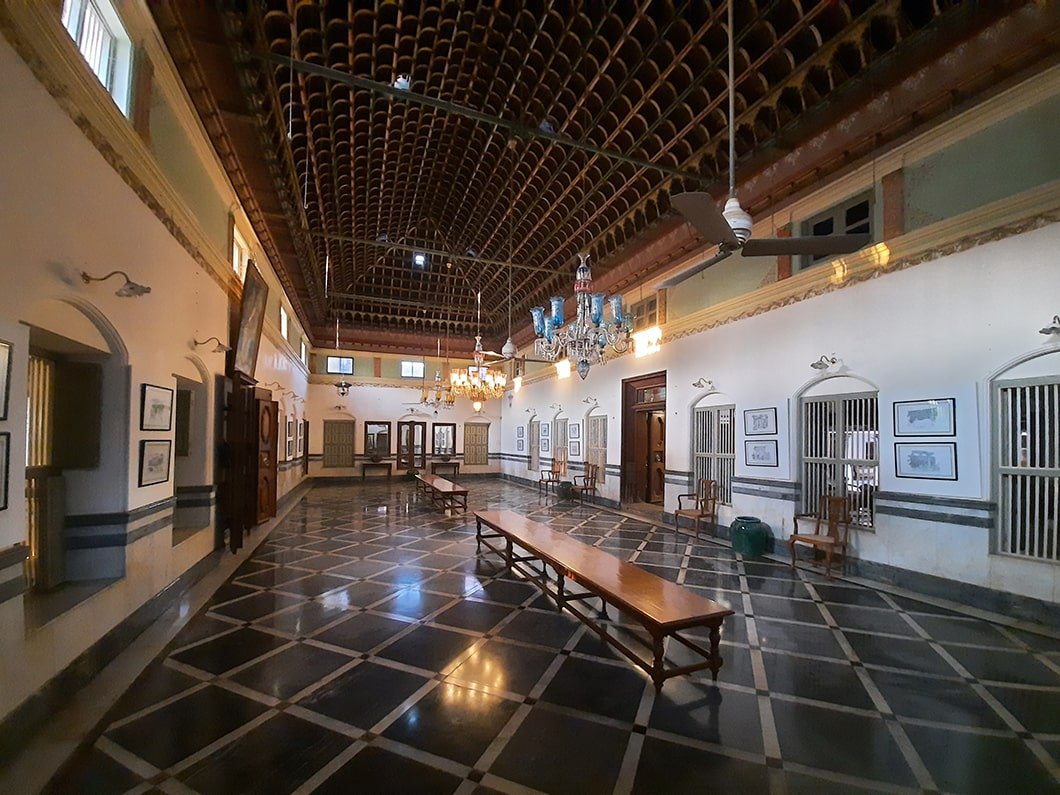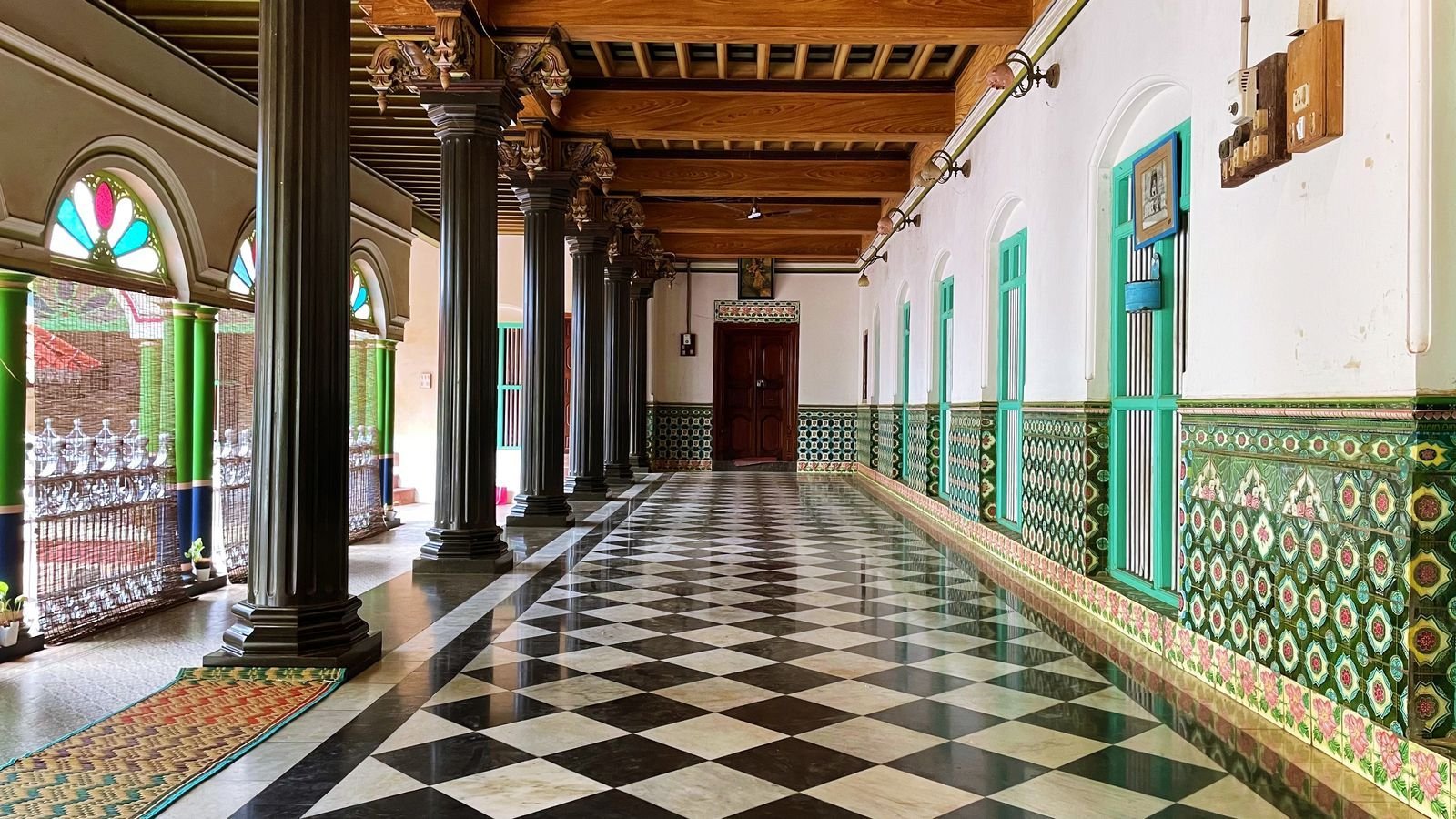Amidst the dry plains and quiet villages of Tamil Nadu lies a world where time slows down, and history lives not in textbooks but in timber, tile, and tradition. Welcome to Chettinad—home to the magnificent mansions of the Nattukottai Chettiars, a community of bankers, merchants, and philanthropists whose wealth once sailed across the Indian Ocean..
These aren’t ordinary ancestral homes. The Chettinad mansions are living museums, each a grand composition of form, function, and finesse. Built between the late 1800s and early 1900s, they reflect a time when prosperity met precision and every brick was laid with purpose and pride.
From the outside, these mansions appear almost unassuming—simple façades hiding staggering opulence within. Step through their carved wooden doors, and you enter a realm of sun-drenched courtyards, soaring columns, and elaborately detailed interiors.


The Chettiars, with their extensive trade networks across Southeast Asia, imported the finest materials from across the globe—Burmese teak, Italian marble, Belgian mirrors, Japanese ceramic tiles—and blended them seamlessly with local craftsmanship. Vibrant Athangudi tiles, lime-plastered walls, and richly carved doorways rooted the homes firmly in Tamil tradition.
These mansions weren’t just designed to impress—they were designed to function as self-sustained ecosystems. Massive kitchens, extensive storerooms, inner courtyards, and separate guest wings reflected a way of life that was communal, generous, and deeply ritualistic.
Every space had a role. Courtyards allowed air and light to circulate freely. Long corridors linked private areas to public ones. Intricate carvings told stories of gods, epics, and cultural values. The layout followed Vaastu principles, ensuring harmony between structure and spirit.
What sets these homes apart is the handmade magic that lives in their smallest details. The lattice work on windows, floral ceiling paintings, brass lamps, and engraved stone thresholds weren’t just decorative—they were daily affirmations of aesthetic consciousness.

Today, many Chettinad mansions stand frozen in quiet dignity—some lovingly preserved, others waiting to be rediscovered. But even in silence, they speak. Of a time when wealth didn’t chase spectacle but expressed itself through refinement, when homes were not just places to live but canvases to honour heritage, celebrate community, and elevate everyday life.
To walk through a Chettinad mansion is to step into a living narrative—a story written in stone, told in wood, and remembered in the hush of high-ceilinged halls.
These are not just houses. They are time capsules of Tamil brilliance—whispering to those who care to listen.



